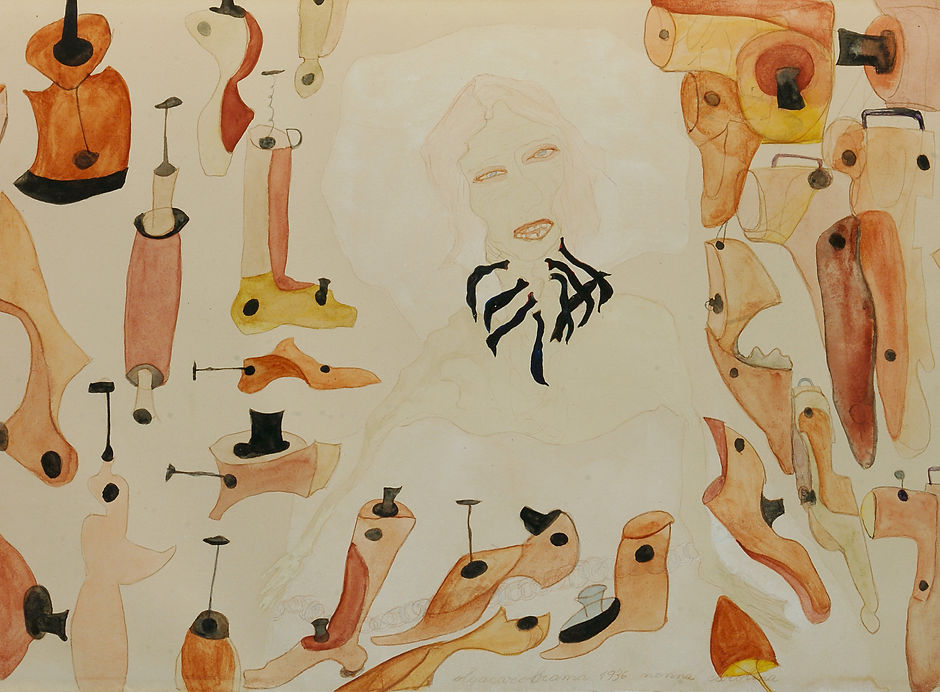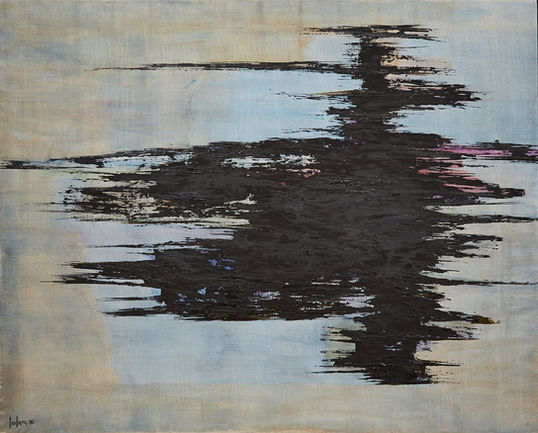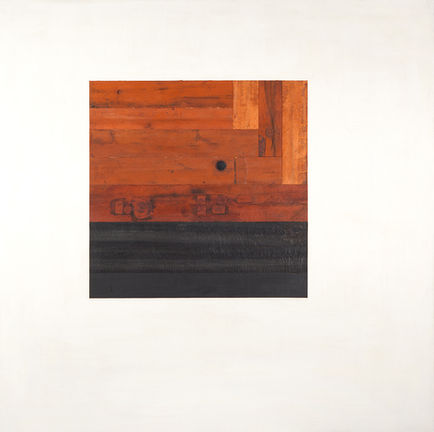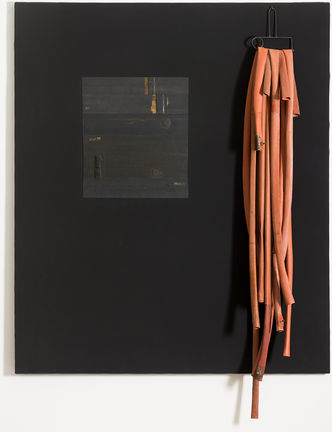17 April 1918
Olga Carolina Rama is born in Turin. The artist, who has a superstitious aversion to the number 17, turns it in her biographies into 16 or 18.
Her mother, Marta Pugliaro (1889-1972), is originally from Livorno Ferraris (Vercelli), while her father, Amabile Rama (1890-1942), was born in a hamlet of Burolo, in the province of Turin, that is called Case Rama. Marta and Amabile are married at Livorno Ferraris on 25 February 1911. Their first child, Adolfo, is born the same year, and a few months later the family leaves for Argentina, part of the great wave of Italian migration of 1911, where they stay until 1917.
Returning to Turin, Emma is born in 1917 and the year after that Olga, who is given as a second name that of her maternal grandmother, Carolina.
1918-1935
Her childhood is spent in affluent conditions; the Rama family leads a prosperous middle-class life thanks to her father’s business, running a workshop that makes parts for important carmakers of the time. Olga makes the most of the family’s favourable economic conditions, between riding lessons and evenings spent singing opera arias. The business and the home are both located at Via Digione 17.
At no. 19 of the same street there is the studio of the painter Gemma Vercelli (1906-95), where Olga, still a child, goes to pose as a model. Observing her, she learns the rudiments of painting and drawing, which within a short space of time are going to become an inescapable part of her life.
At the beginning of the 1920s her father’s business runs into its first financial difficulties, and by the end of that decade, at a time when the whole world is thrown into deep economic crisis, collapses completely. The family’s tenor of life changes radically, to the point where her mother, after a brief period in which she suffers from a neurological disorder and is admitted to the psychiatric hospital “I due pini” in Turin, is obliged to set up a business of her own in 1933, registered as “retail of fashion items and novelties, clothes and furs”. After completing her compulsory education Olga, refractory to academic teaching, does not finish secondary school. As an autodidact, however, she cultivates from her adolescent years her passion for painting as a refuge from everyday life and its troubles, often relying on salvaged materials.
Carol Rama, Grandma Carolina , 1936. Photo by Studio Gonella. Courtesy GAM - Galleria Civica d'Arte Moderna e Contemporanea, Turin.
© Archivio Carol Rama.
1936-1947
At the age of just eighteen, in 1936, she paints a picture of her grandmother, Nonna Carolina, now in the GAM (Galleria Civica d’Arte Moderna e Contemporanea) in Turin. That first watercolour is followed by many others, along with oil paintings characterised by the use of dense layers of colour. The subjects, especially of the watercolours, are personal and unusual, often featuring people, situations and objects that have a real counterpart in Rama’s life. Many, with an explicit erotic and sexual connotation, are depicted in an elegant line reminiscent of Egon Schiele: heretical in both their subjects and their formal style.
The early 1940s are very complicated years for the artist. In 1942 her father, to whom she is bound by strong ties of affection, dies, probably at his own hand: some touching portraits in watercolour painted in the years immediately prior to his death have survived. And between 1942 and 1943, while Turin is subjected to heavy bombing, Carol, her sister Emma and their mother retreat to Case Rama. Her output of works diminishes drastically in those difficult years.
In the first half of the 1940s Carol Rama moves from the family home to a flat at Via Napione 15. It is a garret on the top floor of a fine building constructed by the engineer Ponzano only a few years earlier, in which the artist will continue to live and work right up until her death.
It is probably around the middle of the 1940s that Felice Casorati begins to show an interest in the painter. Carol Rama will never formally become his pupil but Casorati, recognising her potential, gives her his support, and Rama is open to his suggestions and lessons.
The link with Felice Casorati brings other important contacts with it, first of all with his wife Daphne Maugham (niece of the well-known British writer Somerset Maugham) with whom she forms a close friendship, as a portrait of Rama by Daphne and always kept by the artist in Via Napione bears witness. It appears too that, when Carol Rama creates some works out of fabric in the 1950s, Daphne assists her with the sewing. Her ties with Felice and Daphne Casorati will be maintained with their son Francesco and his wife Paola Zanetti.
The contact with Felice Casorati also helps her to get to know other figures in the cultural world of the time, including Paola Levi Montalcini, Italo Cremona and Albino Galvano. In later years, Galvano will exercise a decisive influence on her art, and be responsible for some of the most intense things ever written about her.
Conscious of Rama’s talent, Casorati helps her to start showing her work. The information we have with regard to an exhibition of Carol Rama’s works held in 1945 at a charitable organisation called the Opera pia Cucina malati poveri, which seems to have been closed down even before it could open its doors because the images presented are considered an offence to the common sense of decency, is scanty and comes mostly from oral sources. However, we do know that her participation in a group exhibition at the Galleria Del Bosco in 1946 (in which Casorati appears among the artists whose work is on show) is followed by her first solo exhibition at the same venue in 1947, arranged by Casorati himself. In that first presentation to the public, which is widely reviewed, Carol Rama shows her drawings, etchings and paintings, but not her early watercolours, which will not be exhibited until the late 1970s.
Immediately after the end of the war Edoardo Sanguineti enters the artist’s life. From this time on, the artist and the poet will remain bound together in a close, and intellectually fertile friendship that will only end with Sanguineti’s death in 2010.
1948-1957
The opportunities to present her work gradually increase, between solo exhibitions and her frequent participation in important national showcases like the Venice Biennale and the Rome Quadriennale.
At the beginning of the 1950s she meets Picasso, an artist she greatly admires and whose lesson she has already assimilated, as is evident in many of her oils from the late 1940s.
In the same period her ties with the painter, philosopher and art critic Albino Galvano, whom she got to know in the mid-1940s, are strengthened: both join the Turinese branch of the MAC (the manifesto of the Turinese branch of the Movimento Arte Concreta signed by Annibale Biglione, Albino Galvano, Adriano Parisot and Filippo Scroppo dates from 1952). It is the only movement with which Carol Rama is associated over the whole of her long career.
From 1951 onwards, Rama’s works take a decided turn towards abstractionism. Albino Galvano writes several texts on Carol Rama, published on various occasions by the Libreria Salto in Milan, headquarters of the MAC. From the 1980s this aspect of the artist’s production will be showcased by the Galleria Maggiorotto, in Cavallermaggiore (Cuneo). It is in the 1950s that she forms a deep romantic attachment to Alberto Oggero, a lover of art and antiques, that will last for at least a decade.
In the second half of the 1950s Rama moves towards Informalism, gradually abandoning the configuration of the painting as a colour field peopled with the repetition, with variations, of a single module typical of her MAC period. In many cases she returns to denser layers of paint and more close-knit abstract compositions that meet with the approval of, among others, one of Turin’s best-known gallerists: Giuseppe Bertasso, owner of La Bussola, who in 1957 holds a first solo exhibition of her work, which will be followed by others up until the beginning of the 1970s.
1958-1969
A woman of great intellectual curiosity, she regularly attends events and exhibitions staged in Turin, receiving visits from and associating with prominent figures in the city’s cultural life, for the most part intellectuals with a background in other disciplines, such as the musicologist Massimo Mila and the architect Carlo Mollino, and keeps abreast of political and social affairs.
She forms ties with several Turinese families; each of them, for periods of varying length, spends a lot of time with her, helping her, inviting her to visit them and supporting her practically as well as emotionally. The artist develops a profound and enduring friendship with two families in particular, lasting from the 1960s until her death: the Levis and the Accorneros.
At the solo exhibition held in 1964 in Genoa and then in Turin, she shows for the first time in public a group of pictures that combine a handling of paint derived from Informalism with collages of objects like doll’s eyes, metal-working scraps, syringes, stones, rubber stoppers, and a lot of other stuff: salvaged materials and objects, filled with associations, that become part of the painting’s composition. Edoardo Sanguineti’s interest and liking for these works is so great that the poet gives the name “bricolage” to the production of this decade, borrowing the term used by Claude Lévi-Strauss in La Pensée Sauvage, just published in Italian translation by Il Saggiatore, and going so far as to insert passages of his own verse into some of Carol Rama’s pictures. Sanguineti’s writings on the Bricolages are still indispensable today to a full understanding of those works of the 1960s.
1970—1978
The 1970s constitute a particular period in Rama’s life and career. The last exhibition that La Bussola devotes to her, in 1971, marks a break with her previous production and presents works of a completely new character. Edoardo Sanguineti follows this transition closely and in his text commenting on the exhibition stresses the abolition of the macchia, the patch of colour, and thus of its underlying pictorialism, in favour of a reduction of the picture to its minimum terms: Rama arranges pieces of bicycle inner tube on monochrome black or white grounds in balanced abstract compositions, enlivened solely by their differences in colour and traces of wear.
There is photographic evidence from this same year of 1971 of the beginning of the painter’s association with Luciano Anselmino, a gallerist active at an international level who is the representative of, among others, Andy Warhol and Man Ray (the only one in Europe as far as the latter is concerned). Thanks to Anselmino, Carol Rama meets and spends time with Man Ray, establishing a relationship of mutual esteem in the first half of the 1970s. This is attested by the works Man Ray gives to the painter, by his poetic introduction to the catalogue of an exhibition by Carol Rama at the gallery Il Fauno (1974) and by the many works that she dedicates to him.
In the same years Rama meets Alexander Jolas, an important gallerist of international standing. And in the first half of the 1970s Carol Rama is able, thanks to Anselmino’s support, to make trips to Paris, New York and Rome.
Anselmino devotes two solo exhibitions to the artist, prior to his untimely death: one in Turin in 1974 at the Galleria Il Fauno, where alongside the pictures with tyres some interesting “sewn” works are shown (in the catalogue a text by Man Ray, in which appear a series of anagrams of the artist’s name); and a second in 1976 at Anselmino’s gallery in Milan, which he has just taken over from Alexander Jolas.
The latter is reviewed in Data magazine by Giancarlo Salzano, a sensitive intellectual who at the end of the 1960s moves from Milan to Turin. Here Salzano comes into contact with the city’s artistic circles, establishing ties in particular with Aldo Passoni, acting director of the Galleria d’Arte Moderna, and Carol Rama, with whom he forms an association that will remain unchanged from the first half of the 1970s until the beginning of the new century.
An enthusiastic admirer of the artist’s work, he will later assume the role of her gallerist.
1979—1989
In 1979 the Galleria Martano in Turin holds a major exhibition of the painter’s work. A supporter of Carol Rama for a decade already, Liliana Dematteis presents for the first time, thanks to the mediation of a close mutual friend, Luigi Campi, a group of watercolours she had painted in the 1930s and 1940s, never shown to the public before.
A year later Giancarlo Salzano inaugurates his own gallery in Piazza Carignano, a space previously occupied by the Galleria Il Fauno, with an exhibition by the artist in which other watercolours from her early days are presented, alongside more recent works. From this time, and up until the 2000s, exhibitions of Carol Rama’s work will be held regularly at his gallery, reflecting the constant evolution of the artist’s research.
A decisive moment in gaining her greater exposure came in 1985, with her first major exhibition put on in a public space, curated by Lea Vergine. Vergine had already invited Rama to take part in L’altra metà dell’avanguardia. 1910-1940 (The Other Half of the Avant-garde: 1919-1940) in 1980, a group exhibition that has remained a milestone in the way it identified and drew attention to the work of women artists in the early 20th century
With Carol Rama, the retrospective of 1985 mounted in magnificent fashion by Achille Castiglioni at the Sagrato del Duomo in Milan, Lea Vergine succeeds in presenting and making known a substantial part of the artist’s production over the entire course of her career, together with objects from her home and studio.
That important exhibition will be followed by others, including one at the Galleria dell’Oca in Rome in 1987 with a presentation by Giuliano Briganti and another the following year at the Casa del Mantegna in Mantua with a text by Giorgio Manganelli, among others.
The year 1989 marks another significant stage in Carol Rama’s career: Paolo Fossati, one of the most discerning of art historians and critics, curates an exhibition at the Circolo degli Artisti in Turin. Rama often features in Fossati’s essays and exhibitions, and he will make constant efforts to draw attention to her work, to which he gives his strong support and encouragement.
In the meantime, new types of work are emerging in the 1980s, in particular pictures that bear witness to her return to a complex and refined figuration, executed in brilliant colours. Worlds peopled by human figures, angels and animals, fantastic landscapes and perspectives on sheets of paper that have already been printed on, often dating from the previous century, where the existing line serves as a pretext for her to start painting, only to end up an integral part of the picture.
1990-2003
Over this span of time Carol Rama receives some important public marks of recognition. In 1993 Achille Bonito Oliva devotes a solo exhibition to her at the 45th Venice Biennale, with a display designed by Corrado Levi that sets an example which will be followed in many later exhibitions.
And ten years later, in 2003, the artist will be awarded the prestigious Golden Lion for Lifetime Achievement at the Venice Biennale of that year, directed by Francesco Bonami.
From the second half of the 1990s onwards Rama develops another theme that will become a constant feature of her work until the 2000s: her viewing on TV of images linked to the story of so-called “mad cow disease” inspires a new series of works of the same name with a powerful impact: paintings, drawings and even engravings. After the splendid series of Le Parche (The Fates, 1944-47) and the occasional experiment in the ’40s and ’50s, the artist takes up the medium of engraving again at the urging of Paolo Fossati. Franco Masoero’s print shop and gallery in Turin will back her in the resumption of her graphic work, with a particular acceleration in her production from 1998 onwards.
The same year the Stedelijk Museum in Amsterdam hosts an ample retrospective of Carol Rama’s work, curated by Maria Cristina Mundici. The exhibition, which moves later to the ICA in Boston, marks the artist’s entry onto the international scene, where she will not become fully established until some ten years later. While on the local scene, in Turin, there are two galleries that, in addition to the Galleria Salzano, regularly show Rama’s work: the Galleria Del Ponte and the Galleria Carlina, which will confirm its interest in the painter with three monographic exhibitions.
2004—2015
The opportunities to show her work multiply, from the retrospective of 2004 curated by Guido Curto and Giorgio Verzotti at the Fondazione Sandretto in Turin (moving later to the MART in Rovereto and the Baltic Museum in Gateshead, England) to the exhibition at the Palazzo Ducale in Genoa in 2008, curated by Marco Vallora.
In 2009 the Galerie Isabella Bortolozzi in Berlin starts to show the artist’s works, earning her a place on the circuit of international collectors. At last her fame spreads beyond the boundaries of Italy with the ample retrospective staged at the MACBA in Barcelona and the Musée d’Art Moderne de la Ville de Paris (curated by Teresa Grandas and Beatriz Preciado). Starting from Barcelona in 2014, this travels to Paris in 2015 (under the supervision of Anne Dressen) and then to Helsinki and Dublin, ending its journey in 2016 at the GAM (Galleria Civica d’Arte Moderna e Contemporanea) in Turin.
The number of foreign admirers of the artist’s work grows. There is a similar trend with regard to public spaces too: the following year the New Museum in New York devotes an ample retrospective to her at the behest of its director, Massimiliano Gioni. In 2024 the Schirn Kunsthalle will open the remarkable Carol Rama: Rebellin der Moderne (curated by Martina Weinhart), which moves to the Kunstmuseum in Bern in 2025.
Unfortunately the artist is not able to bask in her by now established reputation at a national and international level. She dies on 24 September 2015 at her home and studio in Turin, where she has lived uninterruptedly since the 1940s. Her last known work dates from 2007 bringing to a close an intense career that has lasted over seventy years.
Essential Bibliography
Mundici, Maria Cristina, Roddolo, Raffaella, and Messina, Maria Grazia, Carol Rama: Catalogo ragionato, Milan, Skira, 2023.
Wetzel, Alexandra (ed.), Catalogo ragionato dell’opera incisa, Turin, Franco Masoero Edizioni d’Arte, 2006.
Vergine, Lea (ed.), Carol Rama, Milan, Mazzotta, 1985.
Fossati, Paolo (ed.), Carol Rama, Turin, Umberto Allemandi & C., 1989.
Bonito Oliva, Achille, Carol Rama, dal presente al passato, 1994-1936, Milan, Bocca Editori, 1994.
Mundici, Cristina (ed.), carolrama, Milan, Charta, 1998.
Tozzato, Luigina, and Zambianchi, Claudio (ed.), Edoardo Sanguineti Carol Rama, Turin, Franco Masoero Edizioni d’Arte, 2002.
Curto, Guido, and Verzotti, Giorgio (eds.), Carol Rama, Milan, Skira, 2004.
Marco Vallora (ed.), Carol Rama, Milan, Skira, 2008.
Besson, Gianna, Carol Rama casta sfrontata stella, Turin, Prinp Editore, 2012.
Mundici, Maria Cristina, and Ghiotti, Bepi, Inside Carol Rama, Milan, Skira, 2014.
Dressen, Anne, Grandas, Teresa and Preciado, Beatriz, The Passion According to Carol Rama, Barcelona, Museu d’Art Contemporani de Barcelona, 2014.
Christoffersen, Helga, and Gioni, Massimiliano, Carol Rama: Antibodies, New York, New Museum, 2017.
Castellani, Valentina, Storr, Robert, Frigeri, Flavia, and Lumley, Rober, Carol Rama: Eye of Eyes, New York: Lévy Gorvy, 2019.
Godfrey, Mark (ed.), Carolrama Coralarma Claromara Arolcarma Coralroma Ormalacra Carmarola, Paris, LGDR, 2022.
Weinhart, Martina (ed.), Carol Rama. Rebellin der Moderne, Cologne, Verlag der Buchhandlung Walther und Franz König, 2024.









































































































